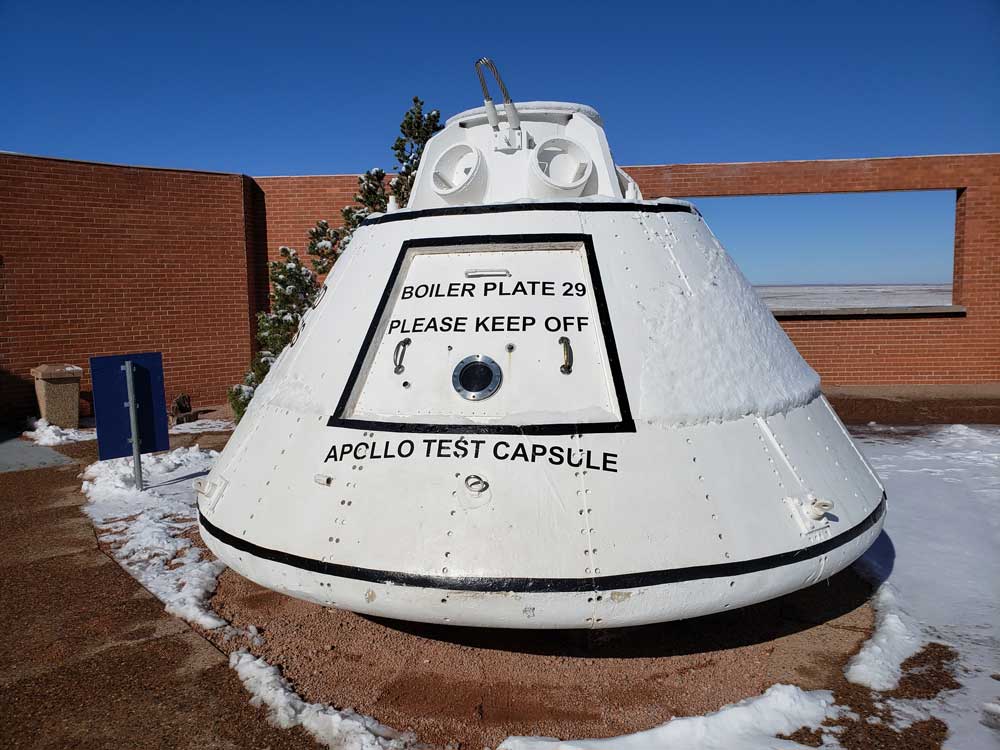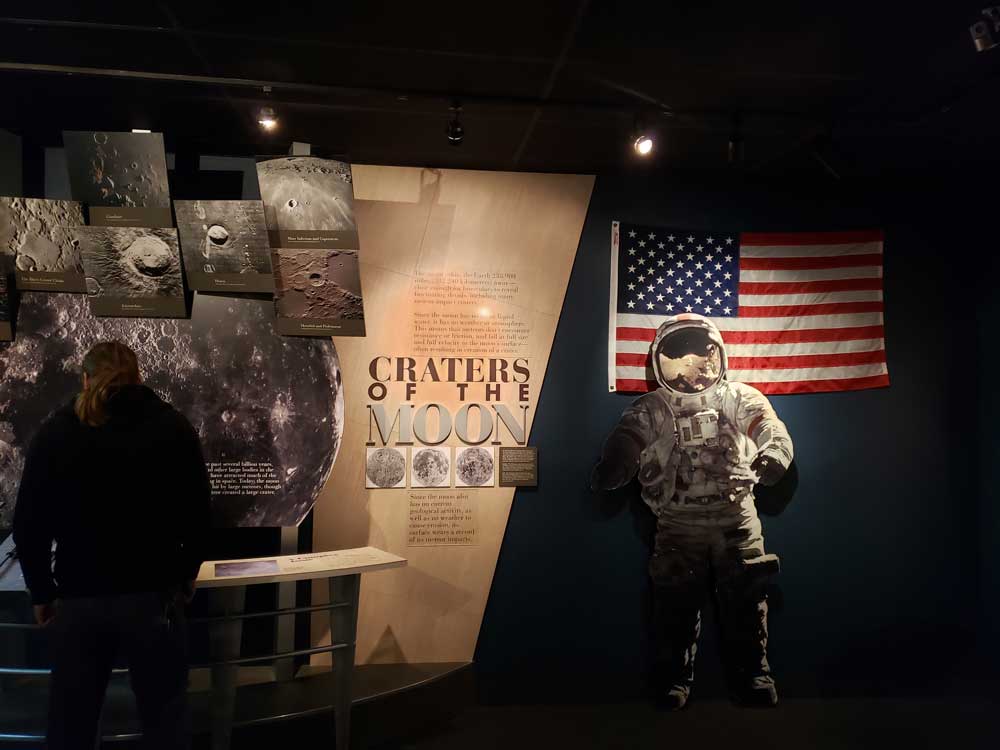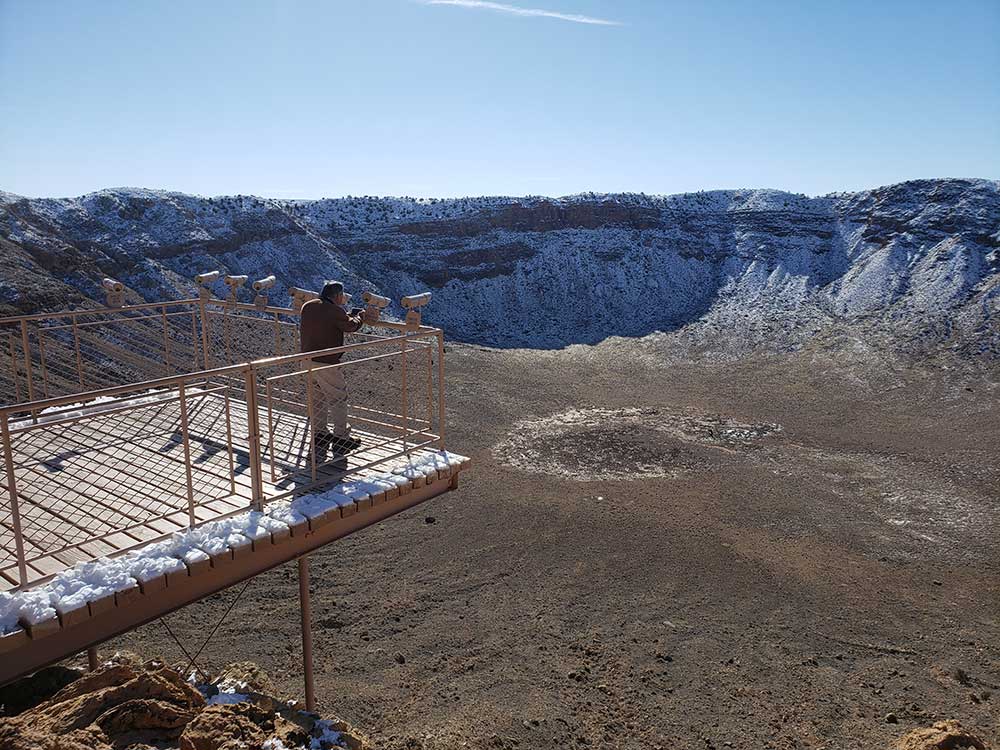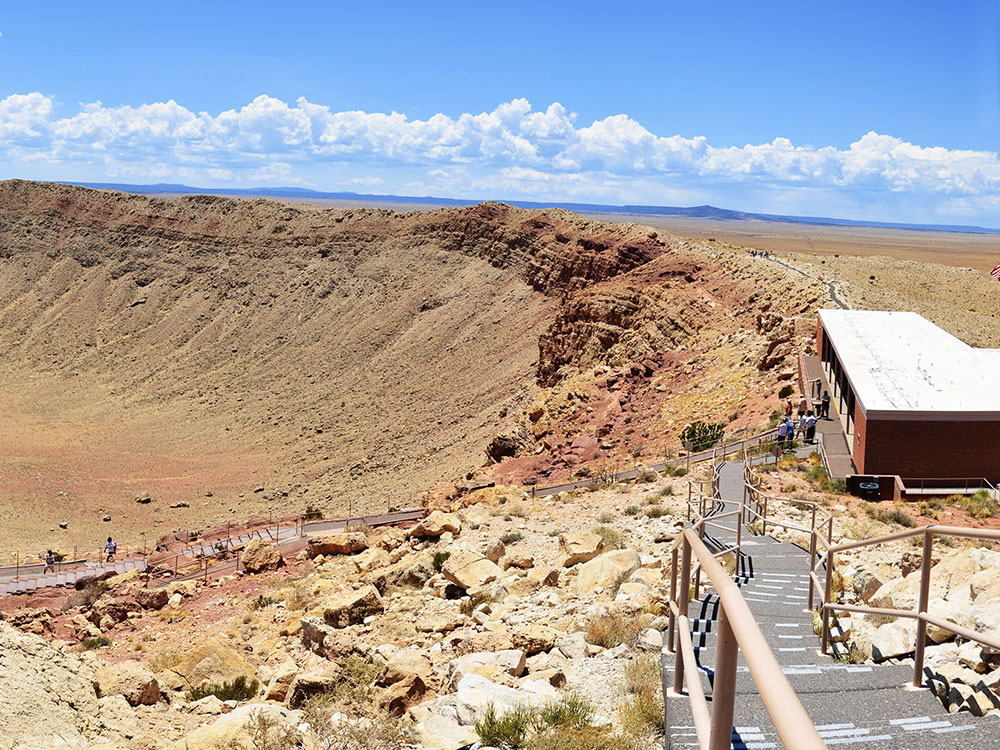Massive impact site formed by a meteorite 50,000 years ago, featuring a mile-wide crater, museum exhibits, guided rim tours, and space science displays.
General Information
Extended summer hours may apply; check website for updates
Closed on Thanksgiving and Christmas Day
Seniors (60+): $20.00
Children (6–12): $13.00
Children under 6: Free
Active Duty Military: Free with ID
Veterans and Non-Active Military: $13.00
How to Get There
From Flagstaff, AZ (35 mi): Take I-40 E for about 30 miles to Exit 233, then follow Meteor Crater Road south for 6 miles to the visitor center and parking area.
Overview
Meteor Crater is a meteorite impact crater approximately 37 miles (60 km) east of Flagstaff and 18 miles (29 km) west of Winslow in the northern Arizona desert.
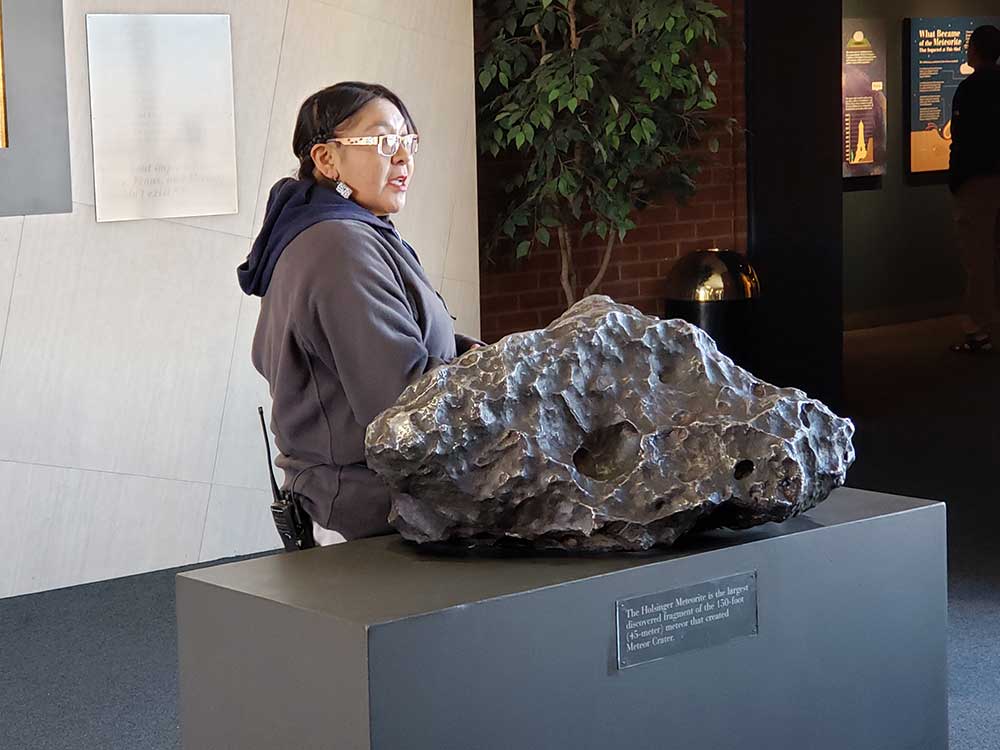
Meteor Crater lies at an elevation of 5,640 ft (1,719 m) above sea level. It is about 3,900 ft (1,200 m) in diameter, some 560 ft (170 m) deep, and is surrounded by a rim that rises 148 ft (45 m) above the surrounding plains. The center of the crater is filled with 690-790 ft (210-240 m) of rubble lying above crater bedrock. One of the interesting features of the crater is its squared-off outline, believed to be caused by existing regional jointing (cracks) in the strata at the impact site.
Despite historic attempts to make the crater a public landmark, the crater remains privately owned by the Barringer family to the present day. The crater is privately owned by the Barringer family through their Barringer Crater Company, which proclaims it to be the "best preserved meteorite crater on Earth". Since the crater is privately owned, it is not protected as a national monument, a status that would require federal ownership. It was designated a National Natural Landmark in November 1967.
The impact created an inverted stratigraphy, so that the layers immediately exterior to the rim are stacked in the reverse order to which they normally occur; the impact overturned and inverted the layers to a distance of one to two kilometers outward from the crater's edge. Specifically, climbing the rim of the crater from outside, one finds:
- Coconino Sandstone (sandstone formed 265 million years ago) nearest the top of the rim
- Toroweap Formation (limestone formed 255 million years ago)
- Kaibab Formation (dolostone formed 250 million years ago)
- Moenkopi Formation (mudstone formed 245 million years ago) nearest the outer foot of the rim
During the 1960s and 1970s, NASA astronauts trained in the crater to prepare for the Apollo missions to the Moon.
Meteor Crater is a popular tourist attraction privately owned by the Barringer family through the Barringer Crater Company, with an admission fee charged to see the crater. The Meteor Crater Visitor Center on the north rim features interactive exhibits and displays about meteorites and asteroids, space, the Solar System, and comets. It features the American Astronaut Wall of Fame and such artifacts on display as an Apollo boilerplate command module (BP-29), a 1,406-pound (638 kg) meteorite found in the area, and meteorite specimens from Meteor Crater that can be touched. Formerly known as the Museum of Astrogeology, the Visitor Center includes a movie theater, a gift shop, and observation areas with views inside the rim of the crater. Guided tours of the rim are offered daily, weather permitting.
This article uses material from the Wikipedia article "Meteor Crater (National Landmark)", which is released under the Creative Commons Attribution-Share-Alike License 3.0
Featured Trails
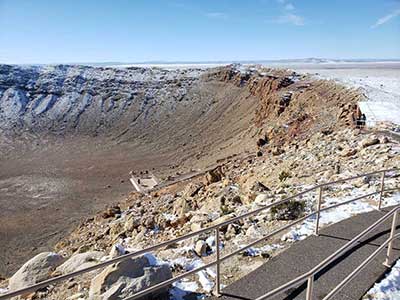
Meteor Crater Rim Trail
1.0 mile loop, 59ft elevation
Guided hike along rim of crater. Can only be done by ranger tour.
There are no trails or access to bottom of crater
